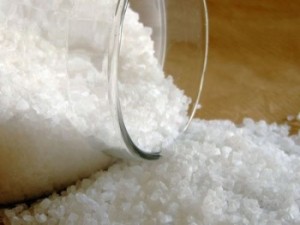Epsom Salts
More Information
Are the leaves on your tomatoes or pepper plants turning yellow? Want more blooms on your rose bushes? Wondering why your lawn is looking brown?
These problems may be the result of a lack of magnesium in your soil, which prohibits roots from absorbing much needed nutrients. Give your foliage and flowers a boost by using Epsom salt. Studies show that magnesium and sulfur, two major components of Epsom salt, may help plants grow greener with higher yields and more blooms.
This natural mineral, discovered in the well water of Epsom, England, has been used for hundreds of years, not only to fertilize plants but to treat a range of human and animal ailments. When magnesium sulfate is absorbed through the skin, such as in a bath, it draws toxins from the body, sedates the nervous system, reduces swelling, relaxes muscles, is a natural emollient, exfoliater, and much more.
Lawns: Apply three pounds for every 1,250 square feet with a spreader or dilute in water and apply with a sprayer.
Houseplants: Use two tablespoons per gallon of water; feed plants monthly.
Tomatoes and Peppers: Use one tablespoon per foot of plant height per plant; apply every two weeks to keep the leaves from yellowing.
Roses: Use one tablespoon per foot of plant height per plant; apply every two weeks. Also scratch 1/2 cup into soil at base to encourage flowering canes and healthy new basal cane growth. Soak unplanted bushes in one cup of Epsom Salt per gallon of water to help roots recover. Add one tablespoon of Epsom Salt to each hole at planting time.
Shrubs (evergreens, azaleas, rhododendron): Use one tablespoon per nine square feet. Apply over root zone every 2-4 weeks.
Trees: Apply two tablespoons per nine square feet. Apply over the root zone 3 times annually.
Garden Startup: Sprinkle one cup per 100 square feet. Mix into soil before planting.
Flowering plants: Put one tablespoon of Epsom Salt into one gallon of water. This mixture helps to force blooms.


